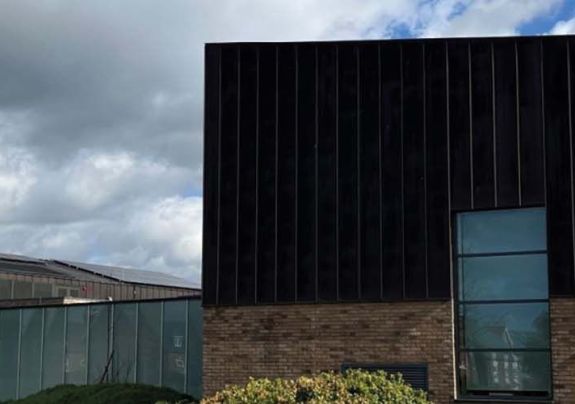As a strong statement for the evolution of sustainable architecture and construction, the Houlton team have recently unveiled Gabriels CofE Academy’s latest project: a 6-classroom block designed to significantly enhance the school's capacity while championing high standards in sustainable design. This ambitious project recently garnered prestigious recognition, receiving the ‘CarbonLite’ certification from the Association for Environment Conscious Building (AECB) for high performing buildings and winning the Local Authority Building Control (LABC) Award for “Best Public or Community Building.”
The ambition for this project was the creation of an exemplar in sustainable construction, integrating a high levels of energy efficiency and low carbon construction into its very core. This aligns with both our own metrics and the growing emphasis on environmentally responsible construction, particularly in educational settings where such projects can also serve as practical learning tools for students.
“This is a great achievement and yet another example of how we are delivering against our Net Zero ambitions and wider sustainability objectives. Projects such as this provide essential learnings for the business on how to translate our sustainability strategy into meaningful implementation. It’s an exciting step in the right direction.”
Richard Quartermaine, Head of Sustainability
AECB's certification is not easily attained. It requires buildings to meet stringent criteria, focusing on energy consumption, structural efficiency and build quality. St Gabriel’s excelled in these areas:
Energy Efficiency: The fabric first approach to reducing energy demand helped achieve a delivered space heating and cooling target of less than 40 kWh/m².a, registering an impressive 36.85. This is over 50% lower compared to the first phase of the school built in 2018.
Air Tightness: With a target to achieve a leak value of less than 1.5m³/m2.hour, St Gabriel's significantly outperformed expectations by recording 0.42. This impressive figure even qualifies the building for the Passivhaus standard, a rigorous voluntary standard for energy efficiency within a building. Current Building Regulations requires an air tightness value of 5m³/m2.hour.
Innovative construction techniques:Cross Laminated Timber (CLT): The use of CLT, known for its durability and environmental benefits, was central to the project. CLT also significantly reduces embodied carbon compared to traditional constructions as well.
To ensure the success of this complex project, the team enlisted the expertise of Etude, a specialist low carbon design consultant at an early project stage. Having previously collaborated on the Houlton Secondary School project, Etude’s role was pivotal in assisting the architect, vHH, with product recommendations and overseeing site installations. The partnership between both parties was invaluable in realising the architectural vision and ensuring compliance with sustainable building standards.
Delivering this project to a high standard has been a great achievement for me personally as well as us as a business. Being a resident and a Project Manager in this area helped us strive to raise the standards and deliver an excellent product.
Adam Sayer, Project Manager and Houlton resident
St Gabriel’s new classroom block stands as a testament to what can be achieved when sustainable design is prioritised. It’s not just an educational space; it's a benchmark in eco-friendly construction, setting a standard for future projects in the community and beyond. This achievement goes beyond accolades, paving the way for a greener, more sustainable future in educational infrastructure.





